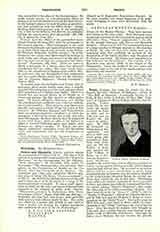

Protus and Hyacinth, SAINTS, martyrs during the persecution of Valerian (257-9). The day of their annual commemoration is mentioned in the “Depositio Martyrum” in the chronographia for 354 (Ruinart, “Acta martyrum”, ed. Ratisbon, 632) under September 11. The chronographia also mentions their graves, in the Caemeterium of Basilla on the Via Salaria, later the Catacomb of St. Hermes. The Itineraries and other early authorities likewise give this place of burial (De Rossi, “Roma sotterranea”, I, 176-7). In 1845 Father Marchi discovered the still undisturbed grave of St. Hyacinth in a crypt of the above-mentioned catacomb. It was a small square niche in which lay the ashes and pieces of burned bone wrapped in the remains of costly stuffs (Marchi, “Monumenti primitivi: I, Architettura della Roma sotterranea cristina”, Rome, 1844, 238 sqq., 264 sqq.). Evidently the saint had been burnt; most probably both martyrs had suffered death by fire. The niche was closed by a marble slab similar to that used to close a loculus, and bearing the original inscription that confirmed the date in the old Martyrology:
D P III IDUS SEPTEBR
YACINTHUS
MARTYR
(Buried on September 11 Hyacinthus Martyr). In the same chamber were found fragments of an architrave belonging to some later decoration, with the words:
… SEPULCRUM PROTI M(artyris)…
(Grave of the Martyr Protus). Thus both martyrs were buried in the same crypt. Pope Damasus wrote an epitaph in honor of the two martyrs, part of which still exists (Ihm, “Damasi epigrammata”, 52, 49). In the epitaph Damasus calls Protus and Hyacinth brothers. When Leo IV (847-55) translated the bones of a large number of Roman martyrs to the churches of Rome, the relics of these two saints were to be translated also; but, probably on account of the devastation of the burial chamber, only the grave of St. Protus was found. His bones were transferred to San Salvatore on the Palatine. The remains of St. Hyacinth were placed (1849) in the chapel of the Propaganda. Later the tombs of the two saints and a stairway built at the end of the fourth century were discovered and restored.
J. P. KIRSCH

